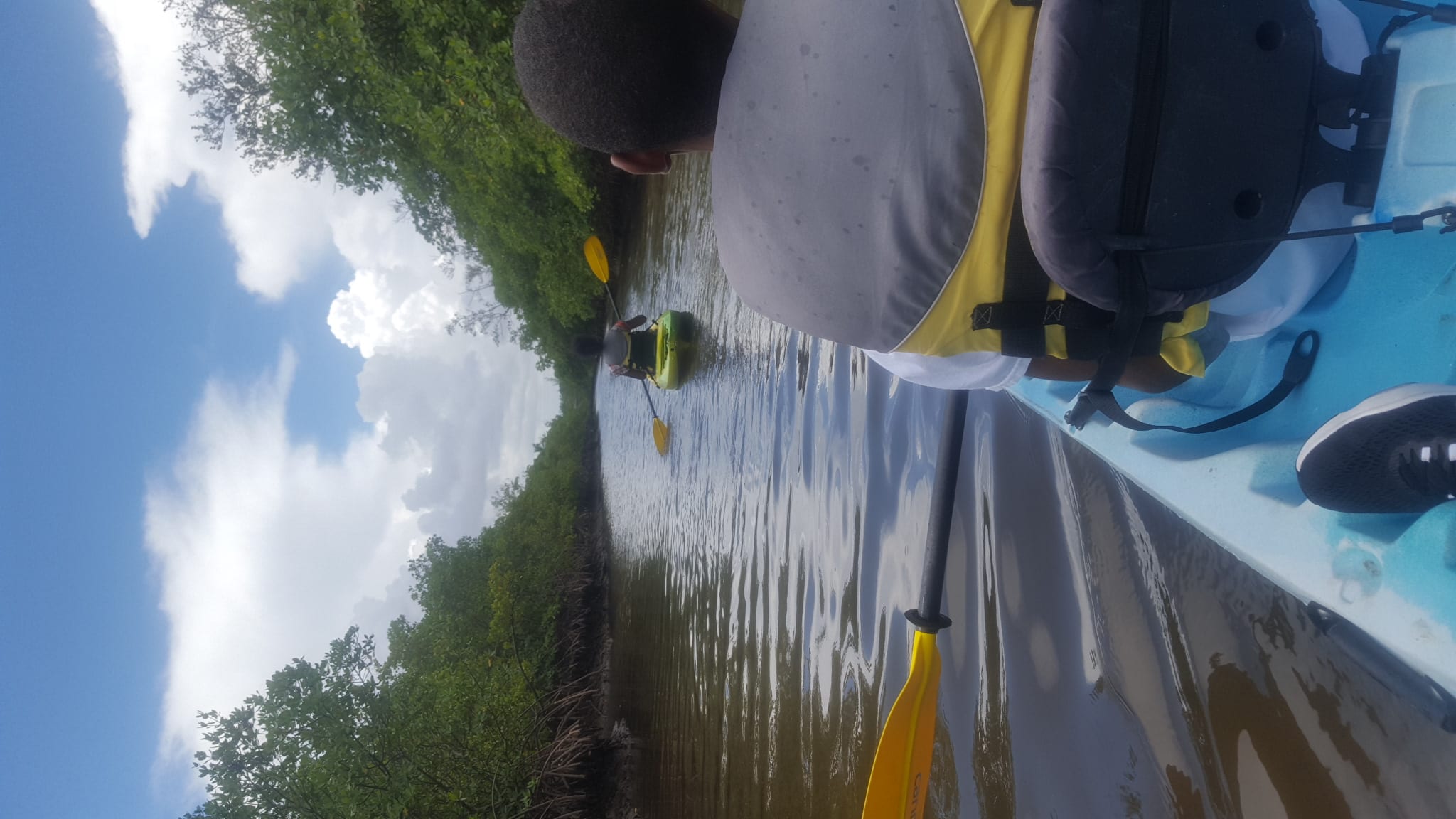Few things are as synonymous with the month of January as the boom in gym memberships and subsequent crowding of such facilities. People of all fitness levels flock to the gym with dreams of crushing their New Year’s resolutions, which will undoubtedly be dropped next month when the Valentine’s day chocolate goes on sale. Until such time, instead of fighting to use equipment at the gym, consider exploring outdoor activities like canoeing and kayaking.
For my outing, I chose to visit West Lake Park located near Sheridan Street and the Intracoastal Waterway. In addition to the park’s amenities, playground, walking paths, tennis and basketball courts, fishing docks and geocaching treasure hunts, visitors can also travel through the waterways by canoe and kayak.
What’s the difference between a canoe and kayak, anyway?
According to the International Canoe Federation, the difference between a canoe and kayak is based on the user’s position in the vessel and what type of paddle is used to propel them. In a kayak, the paddler uses a double-bladed paddle – meaning that the paddle has a blade on either side – which they use to pull through the water, alternating as they move along. These users are also seated in the hollow of the vessel for the duration of the trip. With a canoe, the paddler kneels in the boat and uses a single-bladed paddle to propel them through the water. The staff at the West Lake Park say that deciding which vessel you’d like to use really depends on how you would feel more comfortable.
What are the benefits to canoeing and kayaking?
The muscles that are used to canoe and kayak include the back, arms, shoulders and chest. So, if you’re looking for a great way to exercise your torso, this may be with winning ticket for you. Additionally, according to Better Health since paddling is a low impact activity, you decrease the likelihood of damaging your joints and tissues, while still getting a significant cardiovascular workout.
What’s more, you have the added bonus of taking in the sights, smells and sounds of the great outdoors that you otherwise wouldn’t have been able to do in a gym, which have been deemed relaxing and meditative.
What if you don’t haven’t any experience?
The staff at the West Lake Park encourage visitors of all experience levels to try kayaking and canoeing. The friendly staff will help you select your life vests, canoes or kayaks, paddles, give you a little push away from the bank (and help you out when you get back), as well as hold a brief refresher course for every guest.
If you’d prefer a more in-depth lesson, you can choose to register for the basic kayak class will teach you about different paddle strokes, braces and turning methods. The class even ends with a short tour through one of the parks trails so you can test those skills while your instructor is still there.
Even if you’re an experienced paddler who would like more of a challenge or just some company out on the water, you can opt to go on the Moonlight Paddle tour, or the West Lake Eco-Tour that teaches paddlers about the history of the park and its wildlife.
When, where and how much?
The park is open daily from 9 a.m. to 5 p.m., however, the last call for boats to leave the dock is at 3:30 p.m. Rentals fees are some of the best in the area, starting at $14 for a one hour self-guided outing. Kayaking and canoeing in a serene haven of Broward county doesn’t really get any better than at:
West Lake Park
1200 Sheridan St.
Hollywood, FL 33019
Entrance fee to the park: $1.50


